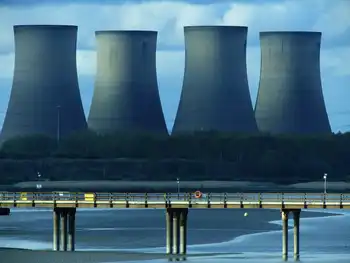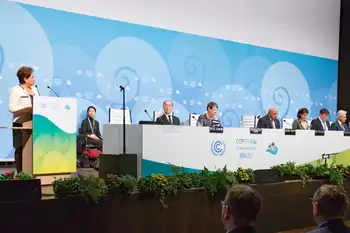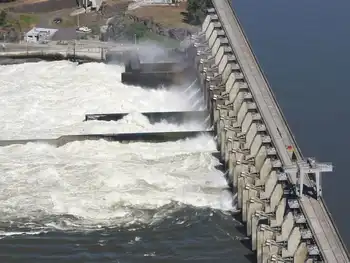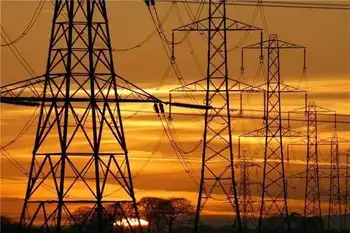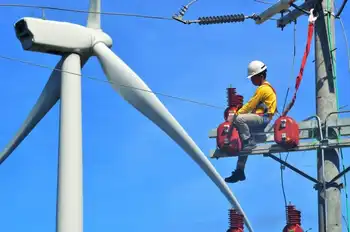Industry looks to green future
By Financial Times
Protective Relay Training - Basic
Our customized live online or in‑person group training can be delivered to your staff at your location.

- Live Online
- 12 hours Instructor-led
- Group Training Available
Electricity generation accounts for about a third of the worldÂ’s carbon dioxide emissions from energy use, which in turn accounts for two-thirds of all greenhouse gas emissions.
This is one of the sectors in which deep cuts in emissions are most practicable – the technologies for producing electricity without emitting carbon dioxide are either in use or close to deployment. Europe’s electricity industry has already committed to going carbon-free by 2050.
Electrification also offers the prospect of cutting emissions from other sectors. Electric cars look a better bet than biofuels for greening road transport. Electric heat pumps, which carry heat into the home, are an alternative to burning coal and gas for warmth.
However, low-carbon power is going to be more expensive, at least initially, and will require a huge investment in infrastructure as well as a steep improvement in energy efficiency. In short, there will have to be an entirely new type of electricity grid.
Advocates of carbon-free power talk about a “trinity” of generation: nuclear, renewables – such as wind – and fossil fuel plants that capture and store their carbon dioxide emissions.
Renewables and nuclear power are already well established. Renewables are starting from a low base: in 2007 18 per cent of the worldÂ’s electricity came from renewable sources, of which 16 percentage points came from hydro power, and just 1 each from wind and biomass. They are however growing fast, with global wind power capacity rising by 29 per cent last year thanks to construction programs in the U.S. and China.
Nuclear power provides about 15 per cent of the worldÂ’s electricity. Although a generation of ageing plants around the world are coming to the end of their working lives, many countries, including China, India, the UK and Italy, have ambitious construction plans.
Carbon capture and storage remains a nascent technology: no one has yet proved that an integrated process can work on a commercial scale.
However, the U.S., Canada, Australia, the European Union and others have pledged billions of dollars to back demonstration projects. This suggests commercial deployment could be possible, given the right subsidies, around 2020.
Even so, any transition to carbon-free generation will take decades.
Low-carbon technologies are generally more expensive than fossil-fuel plants: in the case of some, such as offshore wind, they are a lot more expensive.
At the same time, power generation will not always be available. The British government, which is backing EuropeÂ’s fastest expansion of wind power, is building into its plans for 2030 a huge margin of spare generation capacity which can be used when there is no wind.
Managing demand will become crucial. Lars Josefsson, who is chief executive of Sweden’s Vattenfall, one of Europe’s biggest electricity companies, and president of Eurelectric, the industry association, says: “The key to Europe’s low-carbon future will be on the demand side.”
If power supply is inflexible, it is particularly important that demand is flexible to balance the grid.
A higher cost of energy will make consumers more worried about wasting it. The electricity system will probably have to be based on a “smart grid”, which uses information technology to manage flows of power around the network. This would include smart meters – which show consumers how much energy they are using and also allow flexible pricing – devices in homes that can send information and receive instructions, and even smart appliances, that would switch off automatically when not needed.
Higher electricity costs at peak times will mean less spare capacity, which is generally the most expensive and often the most polluting.
Keith Redfearn, general manager of transmission and distribution in Europe for GE, one of the leaders in developing smart grid technology, says: “The biggest opportunity is to flatten out the peaks in demand. Electricity at peak times costs 15 times more than at off-peak times.”
Just a 5 per cent reduction in peak demand in the UK would remove the need to build five mid-sized gas-fired power plants, he says.
The smart grid would also make possible the widespread use of electric cars, which could be charged overnight when other demand is low, and more decentralized generation, allowing people to produce their own power from solar panels, wind turbines or domestic boilers, and sell any excess.
“It sounds like a pipe dream if you project forward to how the world could look,” says John O’Farrell of Silver Spring Networks, another smart grid technology company.
“But think back to the early 1990s, and you would have never predicted iPods and BlackBerrys, Twitter and Skype. All it needs is some smart decisions to make it happen.”






